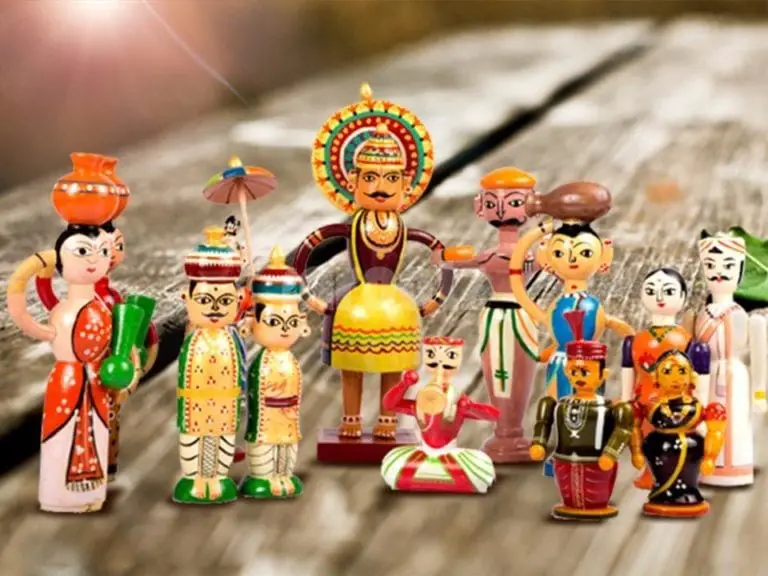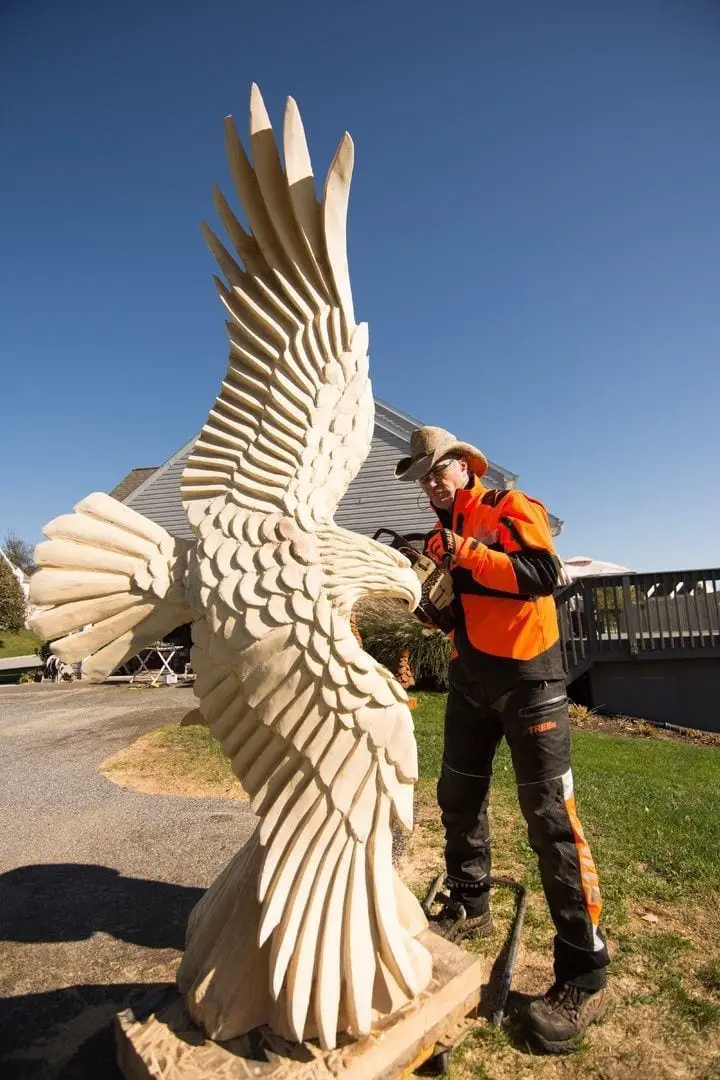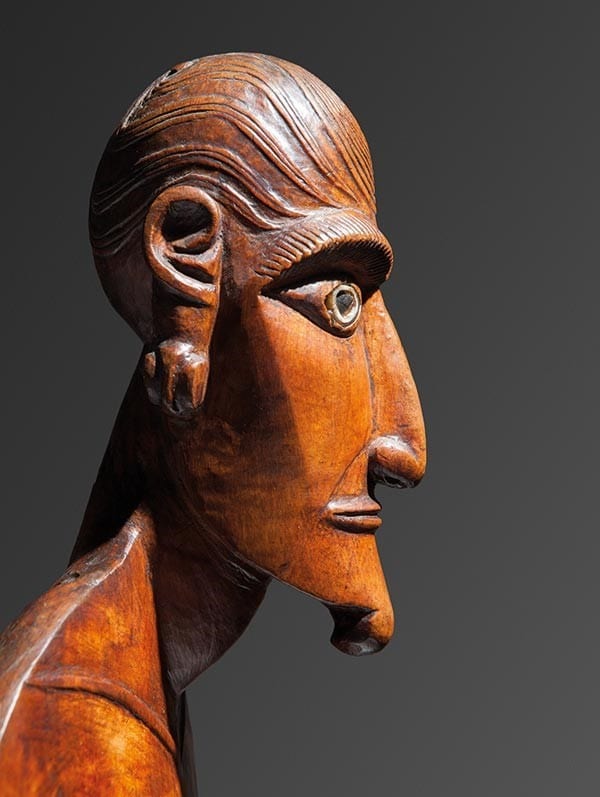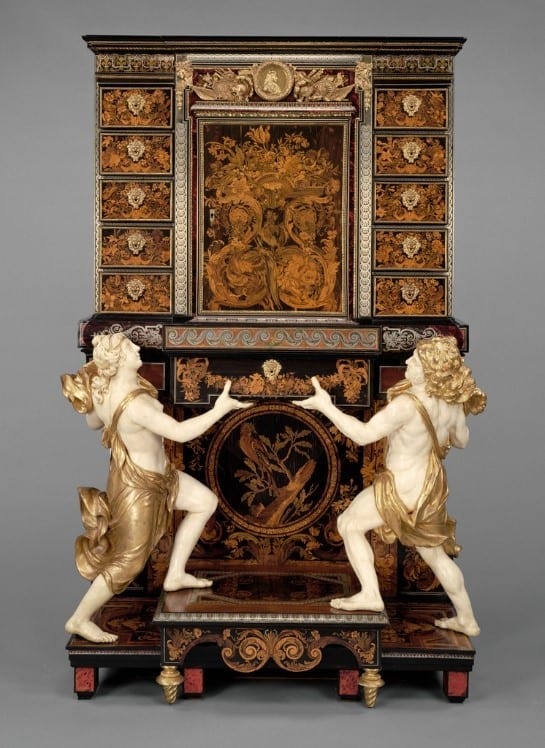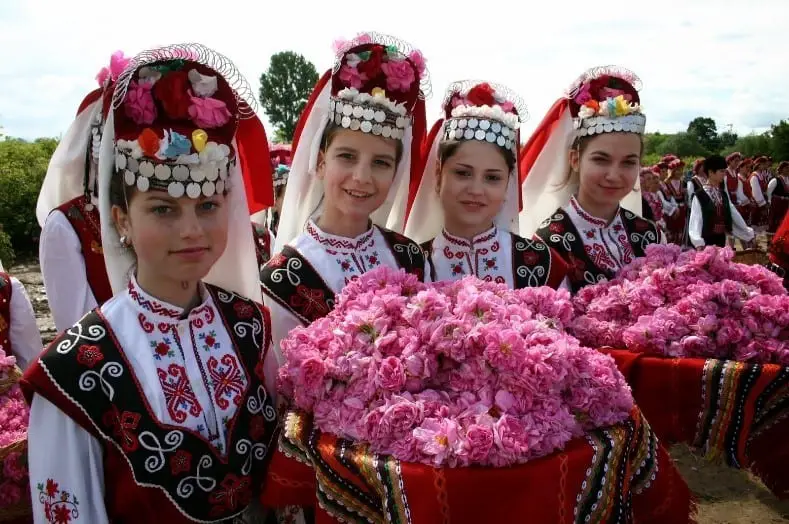
Bulgarian girls in traditional costumes picking fragrant roses for the production of Bulgarian Rose Oil – Image Source
The year is 1802. The location is the biggest monastery in Bulgaria – the Rila Monastery – situated high in the Rila mountains, embraced by centuries-old forests and close to the mesmerizing 7 Rila Lakes. Monk Rafail is adding the final touches to a wooden crucifix that is about to immortalize his talent and hard work forever.
After twelve years of persnickety carving using magnifying lenses and fine burins, monk Rafail has just recreated 104 religious scenes along with 650 tiny figures on a whole piece of wood measuring at 81 x 34 centimeters (32 x 13 inches).
Video by Amazing Place on our Planet – 7 Rila Lakes & Rila Monastery, Bulgaria in 4K Ultra HD
Source: youtube.com
Due to the miniature size of the carvings, Rafail was slowly losing his eyesight. However, he never gave up on finishing the wooden crucifix. Soon after accomplishing the elaborate masterpiece the monk lost his eyesight completely.
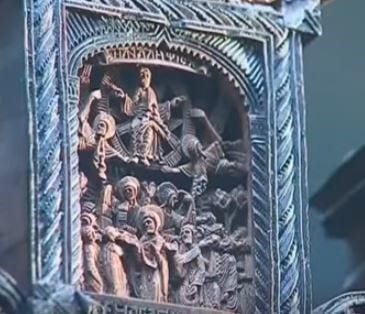
One of the 104 religious scenes on Raphail’s Cross – Image Source
Little did the monk suppose that the wooden crucifix was about to become world-known under the name Rafail’s Cross (also known as Raphail’s Cross).
Video by Souvenirs from Bulgaria – Raphail cross – immortal masterpiece
Source: youtube.com
In 1974, Rafail’s Cross was a part of an art exhibition held at Pompidou Center, France, where both Salvador Dali and Picasso were left astonished by the monk’s meticulous and genius work, as highlighted by the Parisian art critics soon after the exhibition.
The glory of this stunning creation was never really intended to praise Rafail’s skills. Instead, it was created to praise the invisible force that flows through the Universe and all the way down to the hearts of all the people on the planet – the power of Faith and the power of Love.
The Unbreakable Spirit of the Bulgarian Nation: Understanding the Formation of the Rich Symbolism and Traditions of the Natives
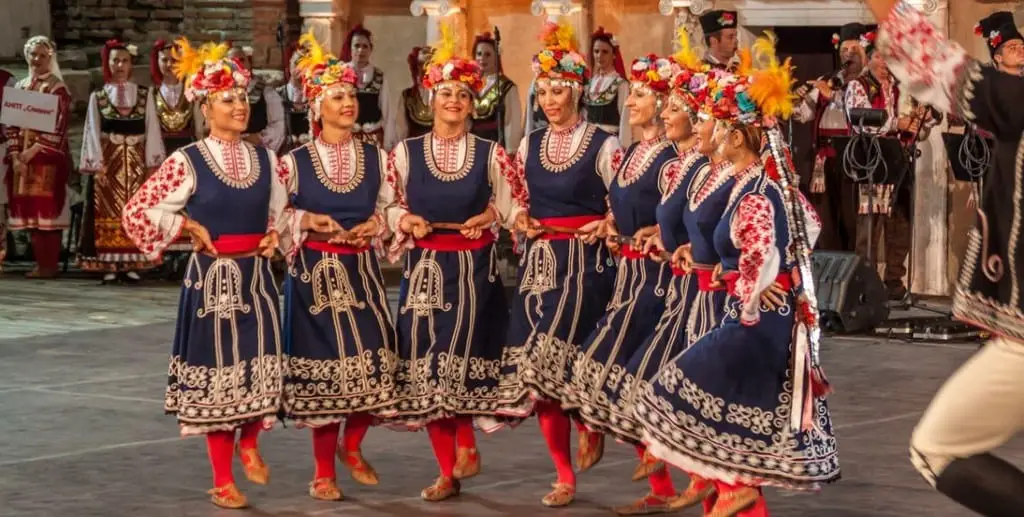
Traditional Bulgarian folk-style dances and clothing – Image Source
Bulgaria is a country in Southeastern Europe which was founded all the way back in 681. Neighboring with Turkey, Romania, Greece, Macedonia, and Serbia, Bulgaria also has egress to the Black Sea in the East.
Unspoiled mountains, grasslands, forest lakes, and waterfalls make up a huge part of the country’s territory. As a result of the natural abundance of tree specimens, woodworking has always played a key role in Bulgaria’s history. In 2017, the Ancient and Primeval Beech Forests of Bulgaria became a part of the World Heritage List under the aegis of UNESCO.
Video by E.C.O. Institute of Ecology – Primeval Beech Forests of the Carpathians and Other Regions of Europe
Source: youtube.com
In 1396, Bulgaria was conquered by the Ottoman Empire. For nearly 500 years, Bulgarians suffered the dark ages of Ottoman rule. Forced to work hard and fall victims of the merciless Ottoman reign, this period of the history of Bulgaria is commonly referred to as “robstvo” which translates into “slavery.”
The most beautiful Bulgarian women were regularly taken away from their home villages and forced to change their Christian religion to Muslim – something that most of the proud Bulgarian girls refused to do, and this caused them to be violently killed by the Ottomans.
Young boys were taken away from their families to become “enichari” – this was referred to as “blood tax.” Separated from their families from a very fragile age, the boys were then trained to become some of the most atrocious soldiers of the Ottoman Empire – and they often ended up killing their own relatives whom they didn’t even remember after years of harsh military training.
But the suffering and misfortunes did not break the Bulgarian spirit. For 500 years of slavery, the Bulgarians managed to preserve their collective memory as a nation alive and unspoiled by the numerous ravages of the Ottomans.
At the beginning of the April Uprising in 1876, over 200 innocent Bulgarian women and children were brutally killed in the heart of the local church in the small village of Batak – a moment in history which was about to become known as the Batak Massacre.
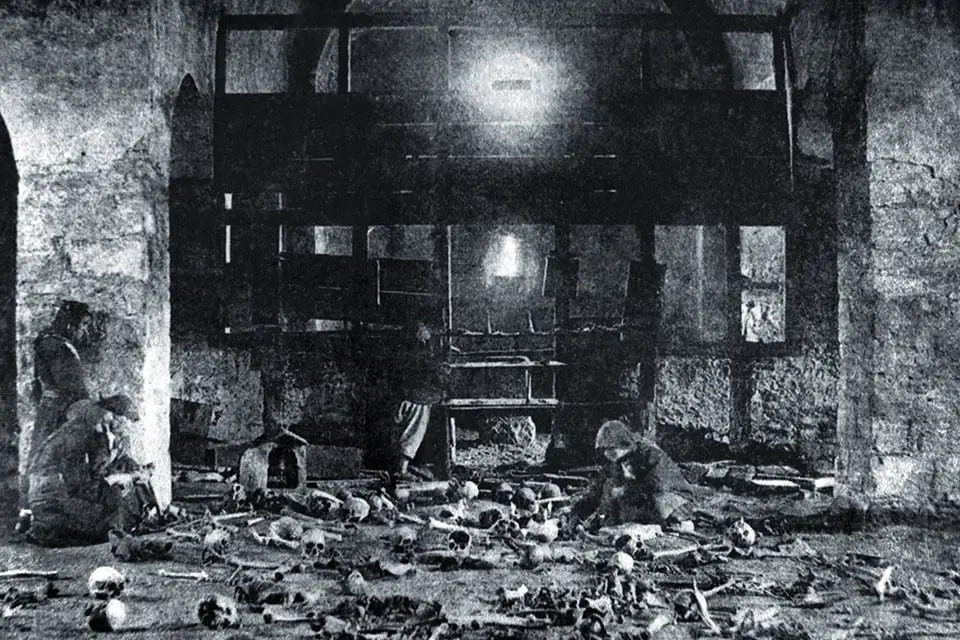
The murderer of the leader of the April Uprising riots for freedom in Batak – Trendafil Kerelov – was especially violent. Years later, it was described by a witness who was among the few to survive – the wife of Trendafil Kerelov’s son named Bosilka.
“My father in law went to meet the Bashi-Bаzouk when the village was surrounded by the men of Ahmet Aga, who said that he wanted all the arms laid down. Trendafil went to collect them from the villagers. When he surrendered the arms, they shot him with a gun and the bullet scratched his eye. Then I heard Ahmet Aga command with his own mouth for Trendafil to be impaled and burnt. The words he used were “Shishak aor” which is Turkish for “to put on a skewer (as a shish kebab). After that, they took all the money he had, undressed him, gouged his eyes, pulled out his teeth and impaled him slowly on a stake, until it came out of his mouth. Then they roasted him while he was still alive. He lived for half-an-hour during this terrible scene. At the time, I was near Ahmet Aga with other Bulgarian women. We were surrounded by Bashi-Bozouk, who had us surrounded, and forced us to watch what was happening to Trendafil. At the time this was happening, Ahmet Aga’s son took my child from my back and cut him to pieces, there in front of me. The burnt bones of Trendafil stood there for one month and only then they were buried.”
Video by Florian Huguenin – Batak in Bulgaria, The sad story of a small village in the Rhodope
Source: youtube.com
In 1873, Bulgaria finally regained its independence but the ferocious massacres that aimed to stop the Bulgarian’s quest for freedom have forever marked the collective consciousness of the natives.
During the centuries of slavery, Faith kept the Bulgarian spirit alive. Thus, the rich traditions of the native population have evolved around nurturing and preserving the most sacred thread that weaved through the dark ages in order to protect the nation from falling apart.
As a result, some of the most beautiful Bulgarian symbols and rituals related to folk-style woodcarving are intricately connected to celebrating the Universal power of pure Love and pure Faith.
Video by The Beauty of Bulgaria – 13 Unusual Bulgarian traditions
Source: youtube.com
The Earliest Official Woodcarving School in Bulgaria: Tryavna Artistic School

By the end of the 17th and the beginning of the 18th century, the Tryavna Artistic School in Bulgaria was set up.
Tryavna is the name of the picturesque village located in Central Northern Bulgaria, with a population of 10 597 people based on stats from 2016.
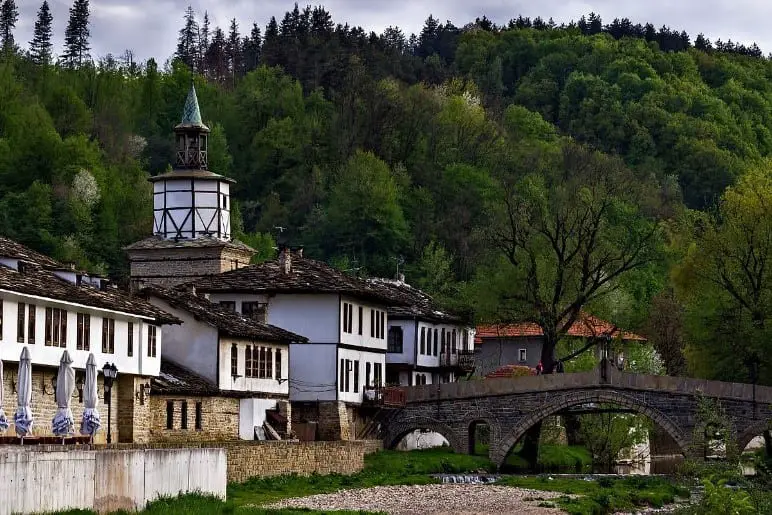
Tryavna – Image Source
The three major disciplines studies at the Tryavna Artistic School include icon painting, wood carving, and crafting various wooden constructions. The local artisans were skillful in all of these crafts. But moreover, these crafts were related to centuries-old traditions of the natives, although no in-depth schooling was available before the beginning of the 18th century due to the Ottoman Empire’s severe restrictions cast over the local artisans.
Video by Plamen Penev – Woodcarving by Anton Nikolov
Source: youtube.com
One of the incredible examples of the traditionally elaborate wood carved decorations that were typical for the first part of the Bulgarian Revival Period is Daskalov’s House.
Daskalov was a merchant born and raised in Tryavna. Within a period of four years from 1804 to 1808, Daskalov built a beautiful house for his two sons – Daskalov’s House. The house was then richly decorated with traditional Bulgarian folk-style carvings.
The talented woodcarvers who were hired to decorate the Daskalov’s house made a bet in 1808.
The master Dimitar Oshanetsa and his apprentice Ivan Bochukovetsa decided to compete over who will be able to decorate the ceilings of the two main rooms in Daskalov’s house more elegantly, beautifully, and impressively.
Both of the woodcarvers created mesmerizing carvings on the very ceilings of the two main rooms in Daskalov’s House – both of the carvings representing the symbol of the Sun.
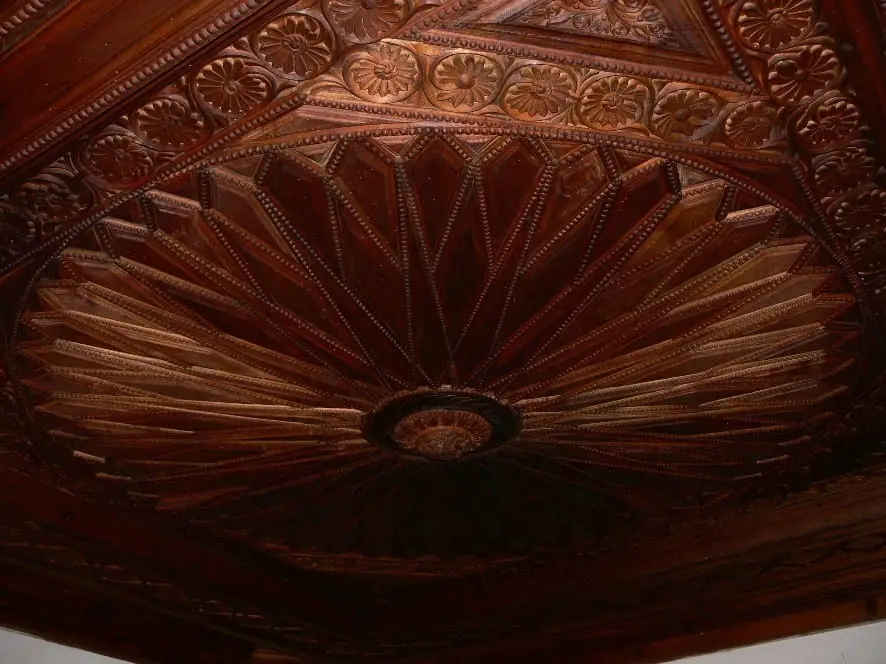

But the gracefully carved ceilings make up for only a small part of the traditional Bulgarian woodcarving styles present in Daskalov’s House, namely shepherd’s carving, home decoration wood carving, and church wood carving.
Shepherd’s wood carving is considered the simplest traditional wood carving style. It consists of shallow carved geometrical figures. It was mostly used for the decoration of everyday objects such as salt shakers, cigarette boxes, and kitchen tools such as traditional wooden spoons, among others.
One amazing object in Daskalov’s House crafted in the traditional Shepherd’s style is a folding candlestick that was specially designed for traveling in order to pray whenever and wherever needed.
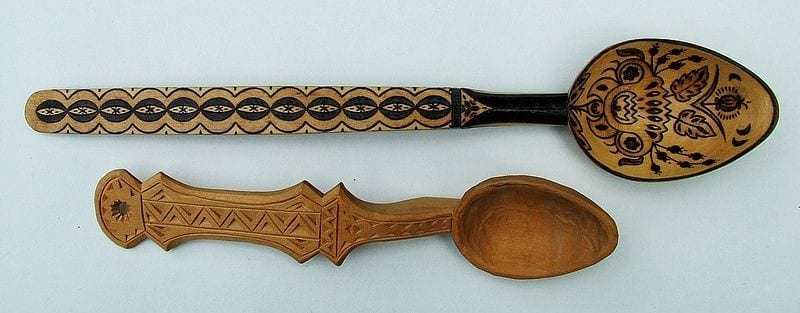
Examples of the gorgeous woodcarving for home decoration style can be seen in literally every piece of wooden furniture in Daskalov’s House, such as tables, doors, and columns, among others.
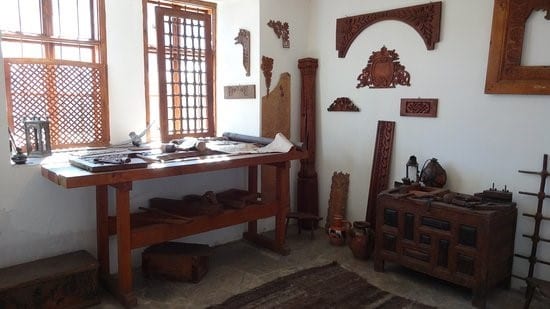
Without any doubt, the most exquisite and elaborate woodcarving style in Daskalov’s House is the church carving style which can be seen in the finely crafted iconostasis.
Since Faith kept the Bulgarian nation form breaking apart in times of darkness and despair, it is easy to understand why the master woodcarvers paid such a tribute to the iconostasis as the core symbol of Faith.
Essentially, iconostases are screens that bear the icons.
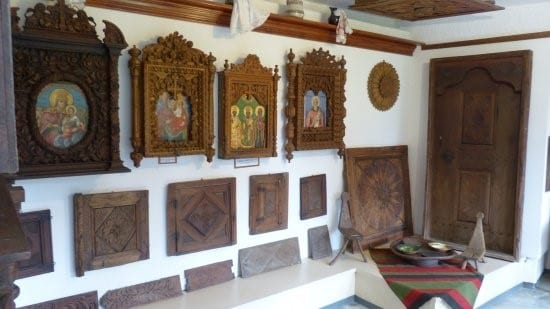
Iconostases in Daskalov’s House – Image Source
Richly decorated iconostases can be found not only in Bulgarian churches but in the homes of the local people, too.
Traditionally, it is believed that an iconostasis can concentrate the vital energy of God and Love by protecting the home along with all the family members where it is placed. Candles can be placed during prayers, along with flowers and/or Holy water during special celebrations.

Tryavna Church Iconostasis – Image Source
Daskalov’s House is currently open for visitors, and it is the only wood-carving museum in Bulgaria.
Apart from the mesmerizing artworks of the two gifted woodcarvers who crafted the notorious ceilings of Daskalov’s House, as well as other impressive carved objects in Daskalov’s House, there is also a spectacular collection by another master wood carver named Gencho Marangozov.
Gencho Marangozov’s collection consists of wood carving, as well as wood sculpting examples of artwork represented by figures of Bulgarian rulers who left a sparkling trace in the history of Bulgaria before the dark period of the Ottoman Empire reign.
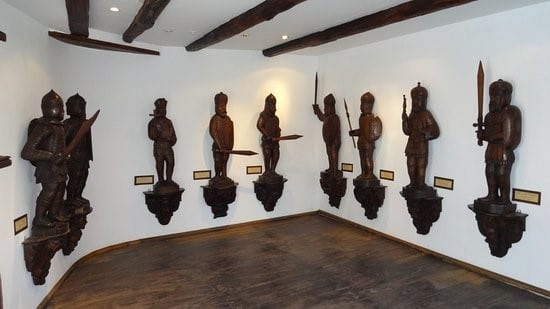
The town of Tryavna is still carrying the ancient traditions of folk-style wood carving and many artisans practice the ancestral crafts of wood carving in local workshops.

The Hypnotizing Magic of Bulgarian Woodcarving and the Associated Customs
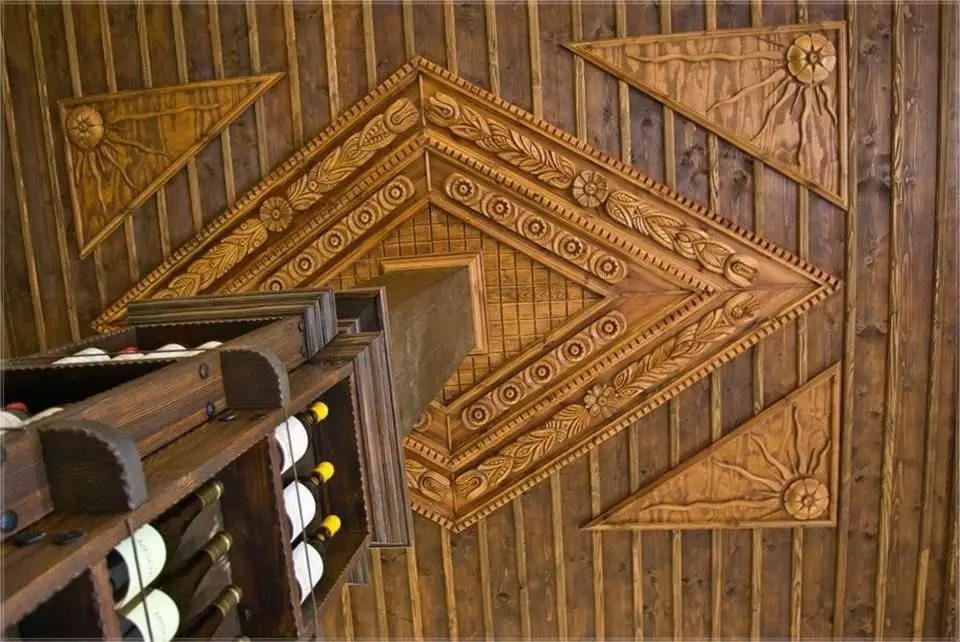
The examples of fine Bulgarian woodcarving in Tryavna feature only a tiny part of the centuries-old traditions of the natives related to working with wood.
One spectacular festival that was recognized and initially, protected by UNESCO as part of the Intangible Cultural Heritage of Humanity is the Surova Folk Feast in Pernik. Pernik is a small city located only several kilometers away from the capital of Bulgaria – Sofia.
The feast is rooted in the ancient pagan beliefs of the Bulgarian nation that still continue to be valued and kept alive by the local population. Dressed in scary costumes that take months of diligent preparation to be completed, the performers wear special masks and heavy bells that often equal the weight of the performers. It is believed that the scary costumes will banish the forces of evil and bring prosperity and divine blessings.
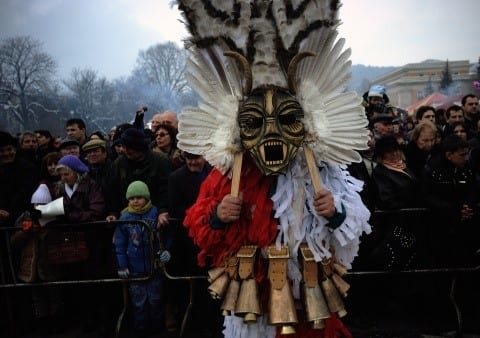
The unique masks are made out of fur, leather, and wood, just like the impressive costumes. The performers are called Kukeri, and the ancient ritual can be seen in various towns across the country of Bulgaria, apart from the Surova Folk Feast in Pernik.
Video by National Geographic – See the Intricate Costumes of Bulgaria’s Kukeri Dancers | National Geographic
Source: youtube.com
Another ancient ritual that was inscribed on the list of the Intangible Cultural Heritage of Humanity is called Nestinarstvo. Nestinarstvo is the ancient Bulgarian ritual of walking barefoot on fire.

It is intricately connected to Faith as the leading force seen not only in traditional woodcarving and in many of the associated customs of the Bulgarian nation.
The fire-dancing rite celebrates two Saints, namely Saint Constantine and Helena. The sacred icons of the two saints are held by the nestinari – the performers of the ancient ritual who sink into a form of trance while dancing and holding the Saints’ icons while walking barefoot on the burning embers.
It is believed that the power and blessings of the Saints protect the dancers from severely burning themselves.
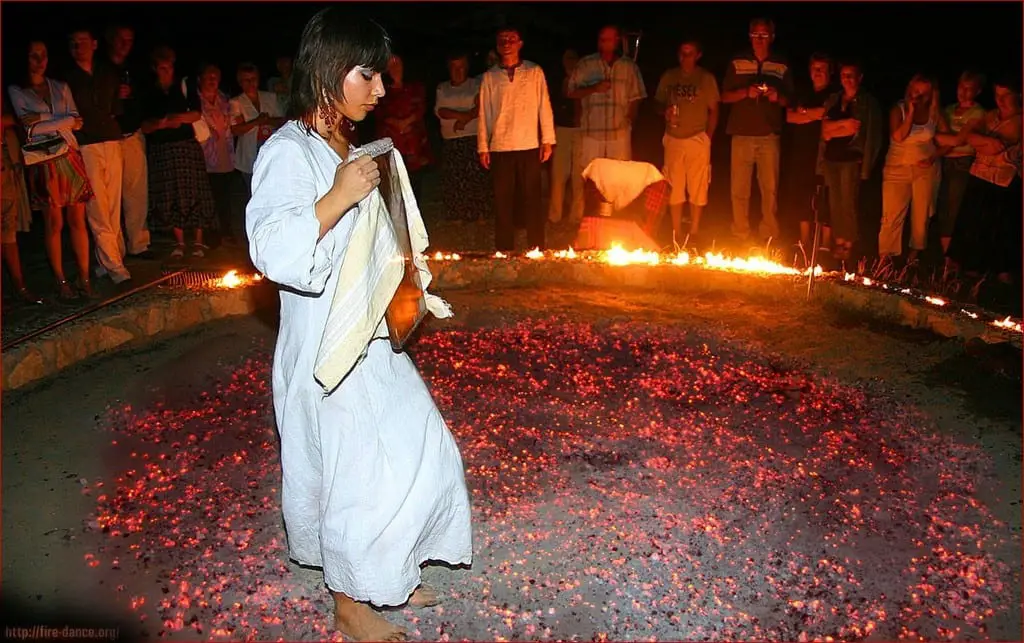
Then again, the icons are the leading characters just like the richly decorated iconostasis encompass the greatest and most exquisite traditional folk-style carvings of the Bulgarian nation.
Video by NESTINARI – Нестинари
Source: youtube.com
Traditional Bulgarian Woodcarving: Final Food for Thought
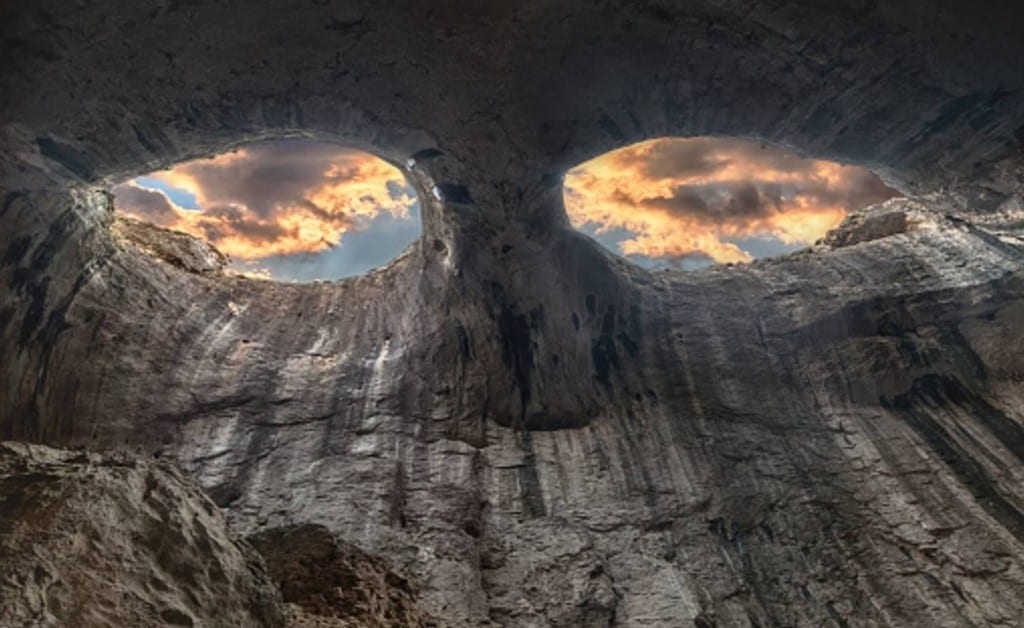
“The Eyes of God” – unique rock formation in Prohodna cave, Bulgaria – Image Source
Bulgarians have a saying which literally translates into Drop by drop – a whole lake becomes, and it highlights the importance of each contribution – no matter if it is big or small – as it truly matters to the well-being of the Whole.
Sometimes, it is extremely hard to put into words the cultural heritage of an entire nation.
There is a certain magic that flows through your veins as soon as you dig a little bit deeper into understanding the symbols hidden not only in traditional Bulgarian woodcarving but also in the centuries-old customs of the natives.
That hypnotizing magic can only be felt through the heart. It knows no limits in terms of language barriers – just like the famous Bulgarian folk song Izlel E Delyo Haidutin that has been traveling in the deep space as a part of the Golden Record on board the two Voyagers may not need to be translated in order to be experienced.
Video by junace4mk – Валя Балканска- Излел е Дельо хайдутин
Source: youtube.com
And just like the captivating aroma of Bulgarian Rose Oil that is traditionally kept in wooden vials so that only one drop at a time can be used when needed – the spirit of Bulgarian woodcarving cannot be possibly digested in large doses. Instead, it takes Faith to look beyond what is merely visible to the eye.
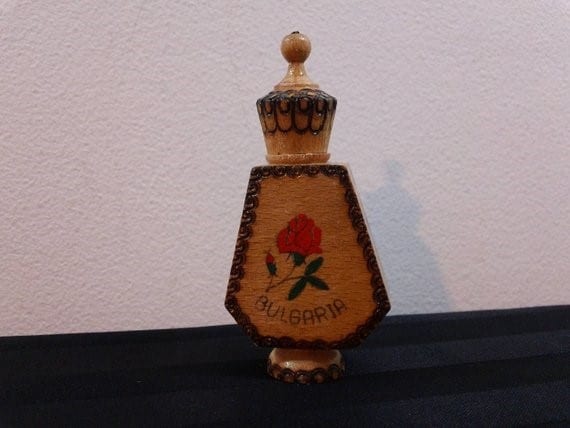
“Bulgaria has many secrets, many layers. The people do not give out information so easy. To understand Bulgaria, you must live here a long time, be intimate with people, live like a Bulgarian, and speak our language. Even then I don’t know how close you can be to real truth. All you see is what is left of us”
Annie Ward, The Making of June



